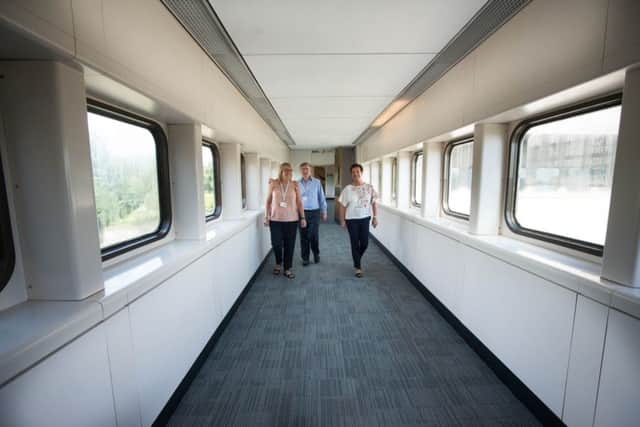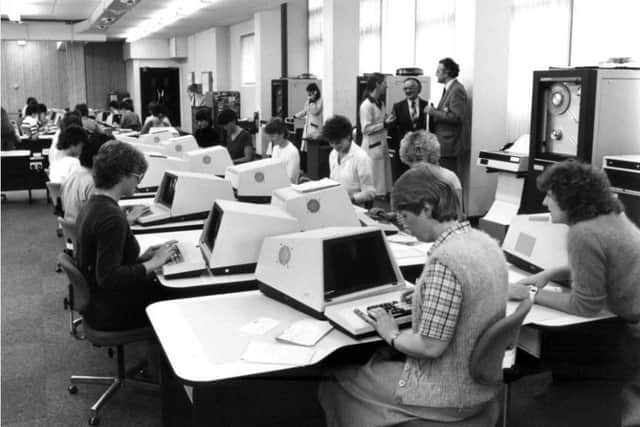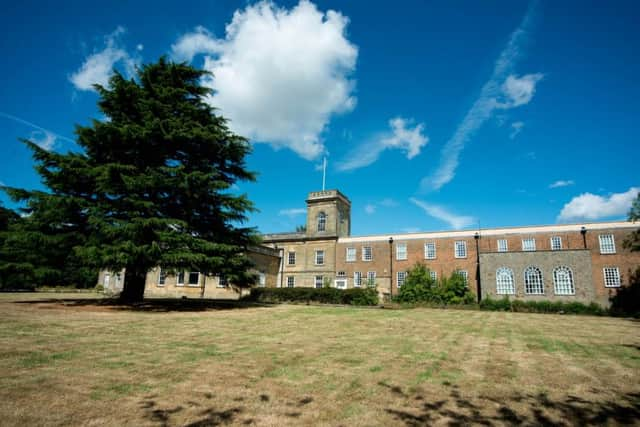End of an era for Leeds estate after 70 years as a hub of energy industry


It started life in 1830 as a wool merchant’s country estate and in its first century, its elite ownership included an Earl and a former Mayor.
For a time, during the Second World War, the Scarcroft estate in north Leeds also became a hospital for recovering injured soldiers.
Advertisement
Hide AdAdvertisement
Hide AdBut perhaps its most well known use, certainly among the hundreds of employees that have worked there, is its 70 year-life as a hub of the energy industry; first as the home of the Yorkshire Electricity Board (YEB), founded in 1948 with its headquarters at the site, and until last month, as offices for utility company Npower, which, then known as Innogy, took over the firm in 2001.


First employed in the days of YEB between them, Catherine McBride, Andrew Ball and Stephanie Satrazanidis have racked up 110 years of experience with the company and its successors.
They moved out of Scarcroft offices to Npower’s newly-renovated sister site at Limewood Approach in February but last week made the familiar journey down the estate road to their former workplace, which has a new era planned as a retirement village.
“Who wouldn’t want to work in a place like this?” Stephanie, 52, from Halifax, says. “It is a beautiful location.”
Advertisement
Hide AdAdvertisement
Hide AdIn front of her stands a building, made up mainly of office space, that dates back to the 1970s, its dozens of round-cornered windows giving a somewhat naval feel.


To her right, the Grade II-Listed Scarcroft Lodge, used for conferencing and training and as a base for senior managers, now has an air of dereliction, though its bay windows, column pillars at its entrance door and the faint stripes on its adjacent lawn hint of its former grandeur.
“When you came in on a morning at dawn, you would drive down [the estate road] towards rabbits and squirrels”, Stephanie, who was based in Scarcroft for several years in the late 90s and again from 2007, says.
She joined the company in 1982, as a clerical trainee in Bradford. “I was in awe of head office”, she says, referring back to the first time she spent a day at Scarcroft. “I had come over for training and it was in the older building and I just remember thinking it was so beautiful. It was a really lovely environment to work in, very plush.”
Advertisement
Hide AdAdvertisement
Hide AdRecalling being served lunch on China crockery, she adds: “It wasn’t like being in a depot when you had people going out with cables on the back of the vans. It was a little bit of a culture shock to me.” She spent 15 years working in metering before turning to IT, and is now a senior solution architect with Npower.
She remembers a time when there was just one computer in the office. “It was shared by about 30 people,” she says. “All the older ladies used to wear overalls because the documents we used were carbonated and they wanted to protect their clothes.”
“This was also a time when people could smoke in offices,” she adds. “We are running systems of paper and card, and everyone is stood there with ash trays.”
Her colleague, 58-year-old Catherine, tells of receiving the first computer in her office in Bradford in 1978, two years after she joined the Yorkshire Electricity Board as a clerical trainee.
Advertisement
Hide AdAdvertisement
Hide AdSecuring the job was no mean feat with around 600 applications in the year she started, and just six people taken on after a testing and interview process. “I got the first computer in the office,” the 58-year-old senior business analyst from Halifax says. “I used to back it up on a floppy disk every night. “It was a bit scary at first because you were so used to writing everything on paper and having lots of copies. We had all these filing cabinets all over the place.”
The transition from paper records to those that are digitised is just one of the changes they, and fellow employee Andrew, have experienced.
In their time, they have seen the privatisation of the Yorkshire Electricity Board in 1990 and several takeovers. Whilst the employees describe once working for a monopoly organisation, which had a retail arm as well as being responsible for distribution and supply, today the market is one of competition for customers.
“A lot of change and development is done in Leeds... a lot has been done from this building,” Andrew from Tadcaster, explains, adding that the transformations have provided opportunities for staff.
Advertisement
Hide AdAdvertisement
Hide Ad“We have moved with the times as the company and industry changes,” Catherine says. “There’s opportunities for development and training...the jobs are so varied. It is like working at lots of different companies within the same company.”
They speak also of a shift to flexible working and talk fondly of friendships and an “inclusive” sociable atmosphere that has remained constant, recalling on site Christmas parties in a conservatory attached to Scarcroft Lodge and a company cricket team, which played on the ground in Scarcroft estate. “There’s always been that strong social aspect”, Andrew, a solutions architect manager, who joined Yorkshire Electricity Board as a graduate trainee in computing in 1986, says.
In its prime the Scarcroft site was home to hundreds of energy workers. Today, after the last Npower employees moved out at the start of July, it sits quiet and empty, bar security staff monitoring the facility ahead of its redevelopment.
Npower says it relocated people to a newly-upgraded and refurbished Limewood as its Scarcroft lease ended in April. The move was announced in 2016, as the company confirmed plans to axe 2,400 jobs in its then 11,500-strong workforce across its UK sites as part of a two-year recovery programme and said it would make “extensive cost savings” to turn around a loss of £99m in 2015. It will be a full circle for Scarcroft estate, which started out life as a private house and will once again be residential, though this time home to many.
Advertisement
Hide AdAdvertisement
Hide AdQuaker wool merchant Newman Cash was the first to live there, after purchasing the estate in the 1820s, when his business was flourishing, and building Scarcroft Lodge as his grand country house in 1830. The home and estate were bought in 1852 by Robert Tennant, a successful Leeds solicitor, and later in 1888 by the Earl of Mexborough, for his daughter Lady Mary Savile. In the 1920s it was bought by Albert Braithwaite, a former Mayor of Leeds, who sold the property in 1938.
Wartime followed and the lodge was used as a convalescent hospital, helping Second World War soldiers who were recovering from injuries on the battlefields of Europe and North Africa. The home’s last private owner, businessman Oliphant Philipson, sold it to the Yorkshire Electricity Board in 1948. It is now being retired, as an email sent out to Npower staff aptly describes its next phase, to become a retirement village in the Yorkshire countryside.
Firm’s changing face
Yorkshire Electricity Board was founded in 1948 and from the very beginning had its headquarters at Scarcroft. The firm was privatised in 1990 and became Yorkshire Electricity Group plc.
In 1997, it was acquired by American Electric Power and Public Service Company of Colorado and changed from being a publicly listed-organisation.
Advertisement
Hide AdAdvertisement
Hide AdScarcroft remained a head office until 2001, when the company was bought by Innogy and the board shifted to Swindon. The firm disposed of its distribution element that year and in 2002 was taken over by German energy company RWE, when all supply business adopted the Npower brand.
Npower’s parent company is now Innogy SE, a subsidiary of RWE.